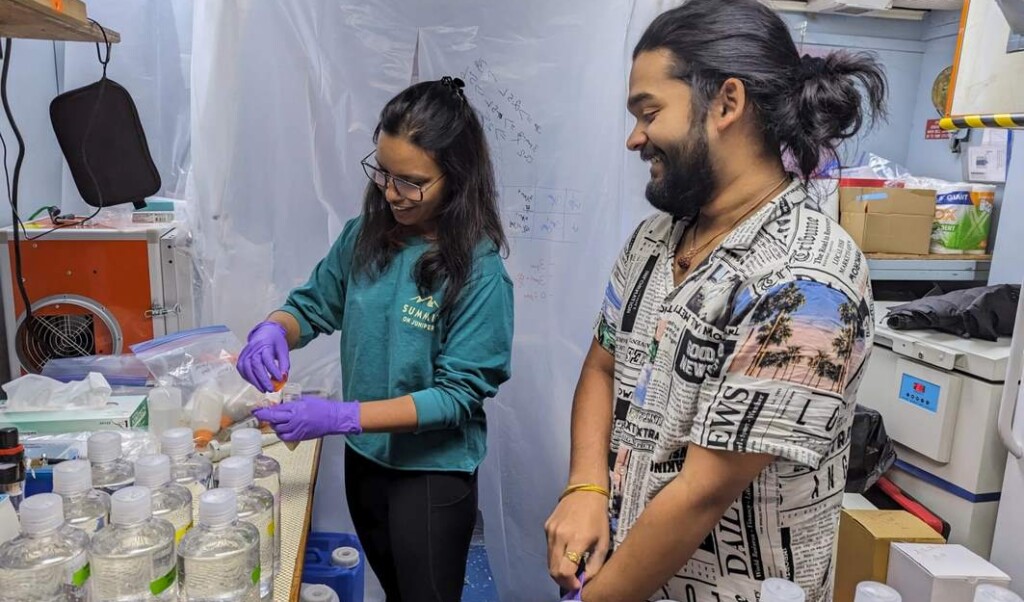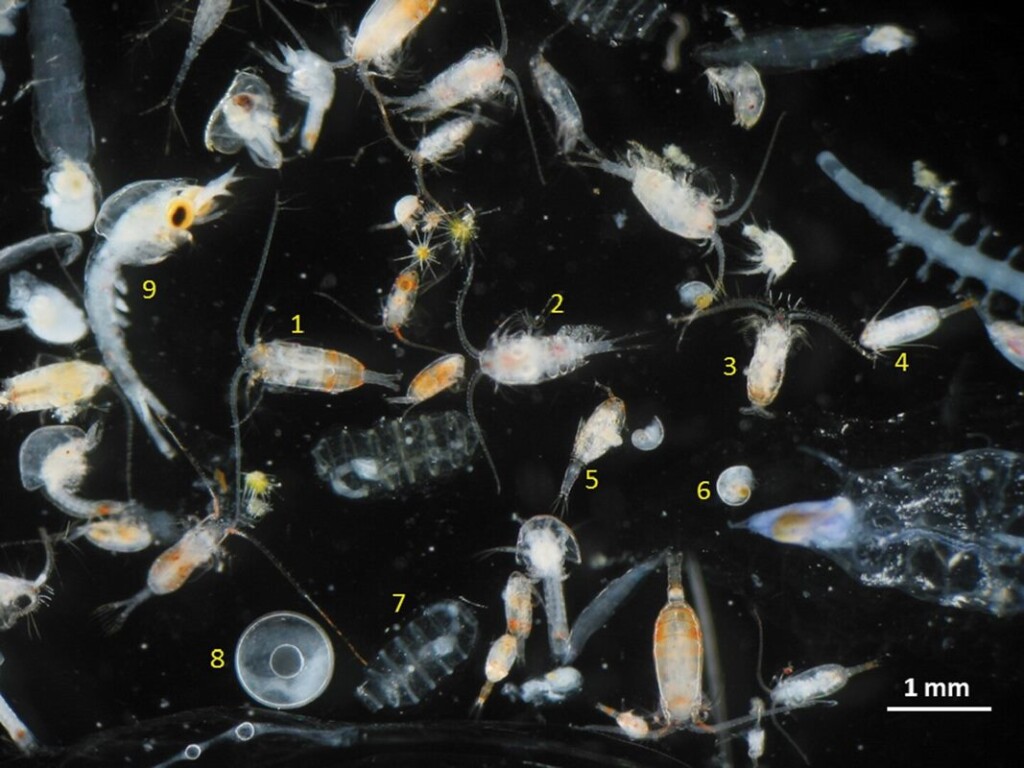Trillions of Microscopic Sea Plankton Recruited to Solve the Carbon Problem
Posted on December 14th, 2024
Courtesy goodnewsnetwork.org

American scientists have proposed a new method for recruiting trillions of microscopic sea creatures and their insatiable appetites for the fight against climate change.
The technique harnesses the animals’ daily habits to essentially accelerate the ocean’s natural cycle for removing carbon from the atmosphere, which is known as the biological pump, according to the paper in Nature Scientific Reports.
The study, published by researchers at Dartmouth College, reported that spraying clay dust on the surface of the ocean converts carbon into food the animals would eat, digest, and send deep into the ocean as carbon-filled feces.
They explain that the process would begin with spraying the clay dust at the end of algae blooms. These blooms can grow to cover hundreds of square miles and remove about 150 billion tons of carbon dioxide from the atmosphere each year, converting it into organic carbon particulates. But once the bloom dies, marine bacteria devour the particulates, releasing most of the captured carbon back into the atmosphere.
The researchers found that the clay dust attaches to carbon particulates before they re-enter the atmosphere, redirecting them into the marine food chain as tiny sticky pellets the ravenous zooplankton consume and later excrete at lower depths.
Normally, only a small fraction of the carbon captured at the surface makes it into the deep ocean for long-term storage,” says Mukul Sharma, the study’s corresponding author and a professor of earth sciences. Sharma presented the findings on December 10th at the American Geophysical Union annual conference in Washington D.C.
The novelty of our method is using clay to make the biological pump more efficient—the zooplankton generate clay-laden poops that sink faster,” says Sharma, who received a Guggenheim Award in 2020 to pursue the project.

This particulate material is what these little guys are designed to eat. Our experiments showed they cannot tell if it’s clay and phytoplankton or only phytoplankton—they just eat it,” he says. And when they poop it out, they are hundreds of meters below the surface and all that carbon is, too.”
The team conducted laboratory experiments on water collected from the Gulf of Maine during a 2023 algae bloom. They found that when clay attaches to the organic carbon released when a bloom dies, it prompts marine bacteria to produce a kind of glue that causes the clay and organic carbon to form little balls called flocs.
The flocs become part of the daily smorgasbord of particulates that zooplankton gorge on, the researchers report. Once digested, the flocs embedded in the animals’ feces sink, potentially burying the carbon at depths where it can be stored for millennia. The uneaten clay-carbon balls also sink, increasing in size as more organic carbon, as well as dead and dying phytoplankton, stick to them on the way down, the study found.
In the team’s experiments, clay dust captured as much as 50% of the carbon released by dead phytoplankton before it could become airborne. They also found that adding clay increased the concentration of sticky organic particles—which would collect more carbon as they sink—by 10 times. At the same time, the populations of bacteria that instigate the release of carbon back into the atmosphere fell sharply in seawater treated with clay, the researchers report.
YOU MAY ALSO LIKE: First-Ever Coral Crossbreeding Hopes to Mimic the Resilience of an ‘Invincible’ Reef in Honduras
In the ocean, the flocs become an essential part of the biological pump called marine snow, Sharma says. Marine snow is the constant shower of corpses, minerals, and other organic matter that falls from the surface, bringing food and nutrients to the deeper ocean.
We’re creating marine snow that can bury carbon at a much greater speed by specifically attaching to a mixture of clay minerals,” Sharma says.
Zooplankton accelerate that process with their voracious appetites and incredible daily sojourn known as the diel vertical migration. Under cover of darkness, the animals—each measuring about three-hundredths of an inch—rise hundreds, and even thousands, of feet from the deep in one immense motion to feed in the nutrient-rich water near the surface.
OTHER OCEAN INSIGHTS: This Isn’t Pasta–It’s Star-Shaped Sand Found in Japan With A Huge Secret Hidden Inside
When day breaks, the animals return to deeper water, where they deposit the flocs as feces. This expedited process, known as active transport, is another key aspect of the ocean’s biological pump that shaves days off the time it takes carbon to reach lower depths by sinking.
Sharma plans to field-test the method by spraying clay on phytoplankton blooms off the coast of Southern California using a crop-dusting airplane. He hopes that sensors placed at various depths offshore will capture how different species of zooplankton consume the clay-carbon flocs so that the research team can better gauge the optimal timing and locations to deploy this method—and exactly how much carbon it’s confining to the deep.
SEA LIFE MAKING WAVES: Cone Snail Poison is Deadly But May Now Lead to Better Diabetes and Hormone Drugs
It is very important to find the right oceanographic setting to do this work. You cannot go around willy-nilly dumping clay everywhere,” Sharma told Dartmouth press. We need to understand the efficiency first at different depths so we can understand the best places to initiate this process before we put it to work. We are not there yet—we are at the beginning.”